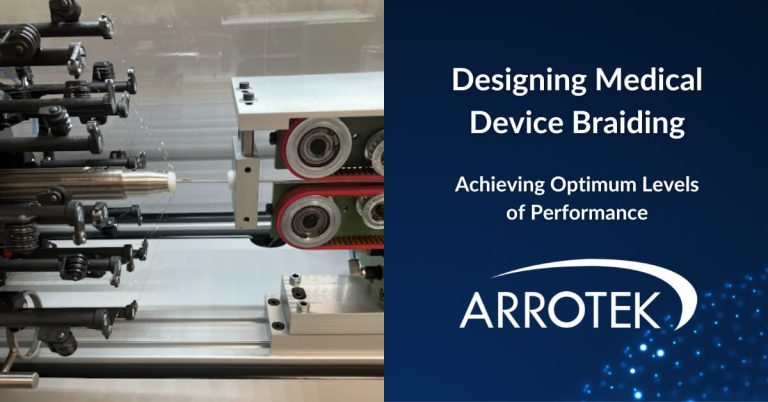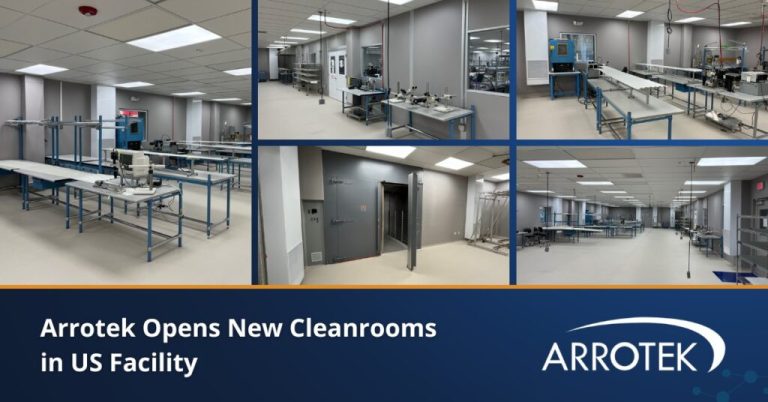The steerable and deflectable catheter design process helps produce some of the most advanced minimally invasive medical devices currently in use. This includes both diagnostic and therapeutic catheter devices.
Furthermore, technology advances mean it is now possible to design advanced catheter technologies that are more complex than ever before.
Steerable and deflectable catheters are designed to navigate through complex and tortuous vasculatures. This could be, for example, for use in cardiovascular, neurovascular, or peripheral vasculature procedures.
The process of designing steerable and deflectable catheters involves using various technologies and materials, as well as taking into account the performance characteristics required by the device.
Speak to an Engineer
To speak to one of our engineers about your idea for a new catheter device, please get in touch by completing the form below.
[ult_buttons btn_title=”Start Now” btn_link=”url:https%3A%2F%2Fwww.arrotek.com%2Fan-overview-of-steerable-and-deflectable-catheter-design%2F#form|title:Speak to an Engineer||” btn_align=”ubtn-center” btn_size=”ubtn-custom” btn_width=”120″ btn_padding_left=”5″ btn_padding_top=”5″ btn_title_color=”#ffffff” btn_bg_color=”#1e73be” btn_hover=”ubtn-center-dg-bg” btn_bg_color_hover=”#2068d6″ icon=”” icon_size=”18″ icon_color=”#f9f9f9″ btn_icon_pos=”ubtn-sep-icon-at-left” btn_border_style=”solid” btn_border_size=”1″ btn_radius=”3″ btn_font_size=”desktop:16px;” el_class=”read-more-button-home”]
The Main Considerations During the Steerable and Deflectable Catheter Design Process
Steerable and deflectable catheters must be designed to ensure precise control and torque response. In other words, optimising the response of the steerable part of the catheter (the tip or distil end) as the device is manipulated by the clinician using the handle (the proximal end).
Reinforcement is often required to prevent the catheter shaft from kinking, and to improve torque transmission.
The deflection and steering mechanisms usually work via pull wires that run from the handle to the catheter’s distil tip. These pull wires are attached to a mechanism usually located in the distil tip. Each pull wire in the catheter (the number of pull wires depends on the steering requirements) has a dedicated liner to allow it to move freely.
While pull wires are currently the main option, they are not the only control methods that are available when designing steerable and deflection catheters. New, alternative technologies that can be used include hydraulic chambers, electrical energy, thermal energy, and magnets.
Steerable Catheters
Steerable catheters give clinicians the ability to guide catheters to a target location in the body.
There are multiple steering options, including one-way steering, two-way steering (bi-directional catheters), four-way steering, and multidirectional steering (often referred to as omnidirectional catheters or multiplanar deflection).
The requirements for steerable catheters that need to be considered include:
- Access diameter, vessel diameter, and any additional catheters or access sheaths
- Bend angle and diameter
- Reach, i.e., how far the distil tip can be displaced from the straight part of the shaft.
- Type of curve, which can be curl, shaped in a loop, and be either symmetric or asymmetric. A symmetric curve bends identically in both directions, while an asymmetric option has different curves for each bend direction.
- Deflection planes (see below)
Deflectable Catheters
Deflection refers to the steering movement of the catheter, i.e., the ability of a part of the catheter, including the tip, to move independently of other catheter parts. So, you can steer the catheter tip and then hold the curved shape in part of the shaft as the tip returns to its original shape for continued navigation.
The requirements for deflectable catheters that need to be considered include:
- Length of deflection
- Number and position of deflection points
- Steering torque
- Steering angle
An example of multiplanar deflection is a catheter that has to navigate through complex vasculatures and then retain its shape as an implant is delivered. Creating multiple deflection zones can be achieved using various methods:
- Varying the materials used in the shaft’s outer layer by changing the material’s durometer
- Selecting specific locations for pull wire anchors
- Radially offsetting pull wire anchors in the same location
- Changing the type of reinforcement by, for example, moving from braid to coil reinforcement or changing the pattern of braid reinforcement.
- A combination of the above
Shaft Design for Steerable and Deflectable Catheters
The design of the shaft determines the steering and deflection capabilities of the catheter. The materials that can be used include:
- Liners, jackets, and multi-durometers – PTFE, nylon, HDPE, Pebax, and other materials
- Reinforcement – braid or coil reinforcement using stainless steel wires and non-metallic materials
- Pull wires for steerability – stainless steel or polymers
Limitless Possibilities in Steerable and Deflectable Catheter Design
The technologies and capabilities that are currently available, as well as those that are emerging, mean the possibilities for steerable and deflectable catheter design are practically limitless. This creates new opportunities for the development of advanced catheter technologies.
Speak to an Engineer
If you have an idea for a new catheter device that requires steering and/or deflectable capabilities, we can help at Arrotek. We have extensive experience designing and developing steerable and deflectable catheters for a range of applications. Get in touch today by completing the form below.





